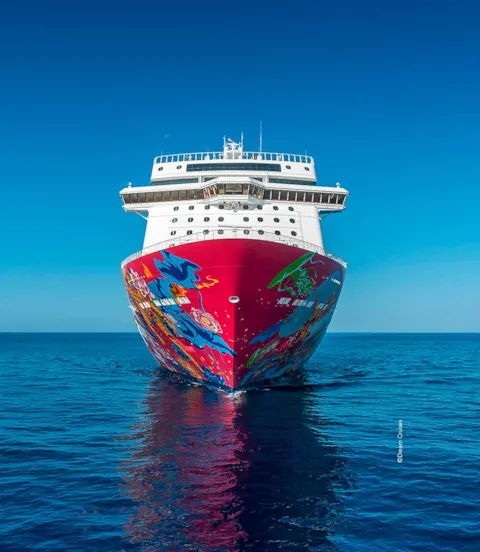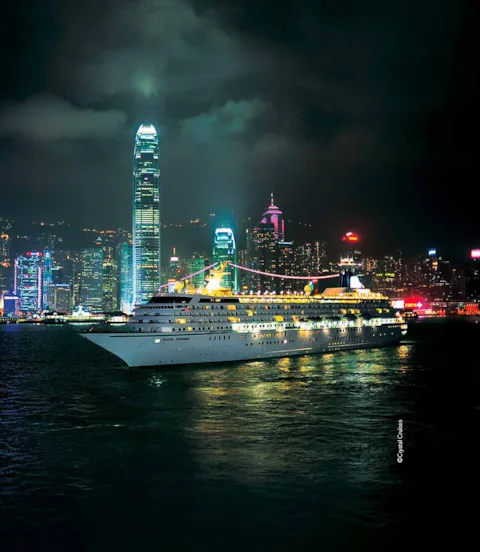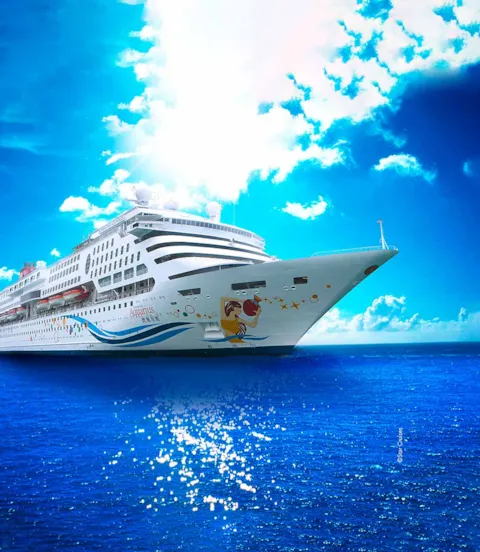Genting Cruise Lines: A champion in China
Over the years, Genting has built up a unique knowledge of the Chinese cruise market, and secured a path to growth with plans to capture new niches like expedition and fly-to-cruise.
Genting Cruise Lines is the parent company for three of the most recognized brands in Asia: Crystal Cruises, Dream Cruises and Star Cruises.
Being with Genting Cruise Lines for more than five years, Capt. Håvard Ramsøy, Vice President Marine Operation, Genting Cruise Lines, has seen a wide range of changes take place in Genting, starting from his very first days. “When I joined the company, we had seven cruise ships in operation under one brand. Two months later we decided to order new ships and signed the contracts with Meyer Werft. These were intended for Star, but then we started Dream Cruises and the ships were needed there instead.”
In the same period, Genting made their first entry into the ultra-luxury market by acquiring Crystal Cruises. In May 2017, they assumed responsibility for Crystal’s technical management from Kuala Lumpur. “That gave us three companies, so quite a bit has changed in those five years,” Ramsøy says.

Growing cruise in China
With change often comes challenge, especially if that change means dramatic growth. “One challenge has been to get people to understand that a large vessel at 150,000 tons and 5,000 passengers is much more to handle than a smaller ship,” Ramsøy notes.
“Traditionally we had one technical superintendent for every two vessels. We have still managed to maintain that, but the volume of information, challenges and work requires us to be more efficient.”
The logistics are different too, he points out. “If you have a deviation or cancellation with a ship carrying 5,000 passengers, the consequences and challenges are much larger. If you lose your home port that could put you a day behind and the whole equation has to be recalculated.”

Keeping crew is key
Attracting and keeping qualified crew has also posed challenges, but Genting’s unique business model gives them some advantages over the competition. “The competition for seafarers is extremely tough, but I think we can say that we are best in class at retention of marine officers. Virtually nobody leaves,” Ramsøy mentions. “If our crew members want variety, they can choose between Star and Dream. Our crews have been very loyal, and we believe that is because we can offer attractive terms and conditions. Also Crystal has been stable, even in international competition. I think Crystal’s reputation has helped us there.”
Starting up the two largest ships and hiring 5,000 crew members in just one year proved to be a particular challenge, Ramsøy relates. “Both because we needed some Chinese-speaking crew, and because some of the crew was mixed between several nationalities and needed to be able to work with Chinese passengers, we started our own training academy in China, drilling service, English language, and safety, and mixed newcomers with experienced crew. That worked well, but it was a lot to handle in such a short time.”

Headquartered in Malaysia
Genting Cruise Lines’ Marine Operations is headquartered in Kuala Lumpur. Ramsøy notes that recruiting directly from the local market proved to be an advantage: “This helped them to feel at home, and that strengthened their loyalty.”
Does he see any other advantages, or disadvantages, to the Kuala Lumpur location? “I don’t think it matters too much where you are in the world now, as long as classification services are available and the infrastructure is good. Wilhelmsen has one of their biggest offices for ship management here, so it must be working well. Together we have given Kuala Lumpur a fairly good foothold in shipping.”
He adds that accessibility to manpower is better in Kuala Lumpur than in more popular locations, and costs are lower. “We have tried different locations over the years, but ended up here. Things work well and it has proven to be the most cost-effective location.”

Being profitable in the Chinese cruise market
With some players pulling out or slowing down their operations in China, how have Genting and Star managed to become stayers? “China is complex, with a big market and a fast-growing upper-middle class,” Ramsøy observes. “Cruise is still attractive for them. But cruise tickets must be bought through a domestic agent. They buy blocks of tickets and much of the profit goes to them. That code has been extremely difficult to crack for many cruise companies but we are actively pursuing a variety of distribution channels for our products.”
Price and product must be pinpoint accurate, Ramsøy says, and tailored to the different regional markets. “This has been the primary challenge for many who don’t have enough local knowledge. The ticket and on-board price must be in balance as well to get the right passengers on the right ships, and make sure they are willing and able to spend money on board.” Part of that equation involves making sure the ships are matched to their markets, and that means keeping the fleet updated.

Cruising beyond China
Not solely focused on domestic cruising in China, Genting is keeping up with the latest trend toward a broadening interest among Chinese passengers. “The big thing going forward is fly-cruise for China,” Ramsøy says. “They want to cruise the Baltic, the Mediterranean and Alaska. But we still have to operate with our knowledge of Asian preferences and pricing schemes. Then we have to have the right tonnage at the destination. Right now we are preparing a ship for Australia and New Zealand and flying Chinese guests in.
Focusing on Crystal Cruises as Genting’s luxury brand, what significant developments has Ramsøy seen in the brand of late? “Our clientele wants things to be simple, from booking and check-in to on-board service, sales and meals. The Crystal brand is luxury, but a new class of luxury is emerging, luxury expedition, where guests have come to expect an even higher level of luxury. The response to this offering has been fantastic. We tested the market out through the Northwest Passage and feedback was good, so we believe in this future market.”
And with more niches emerging, a key to success is being able to transfer customers from one niche to another. “As long as you can duplicate the service, I think people will be willing to move. When you retain that familiar element in other niches, they will feel safe trying something new.”

Growth for Genting
“Genting Cruise Lines has three brands with three very different product offerings,” Ramsøy sums up. “We have had aggressive growth the past years. This is a sign that our owners are very committed, not just to growth but also to quality.”
“Without owning our three yards we would not have been able to meet our goals, and that is a huge investment in growth, but we still have to ensure profitability. We have had to modernize and learn along the way, but if we can continue to find and retain the right competencies, I believe we are well-positioned for growth.”
Helge Hermundsgård
Head of Sales